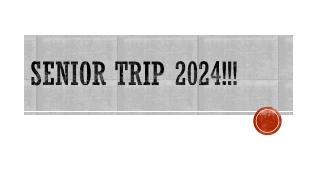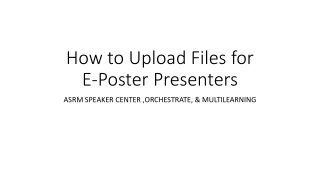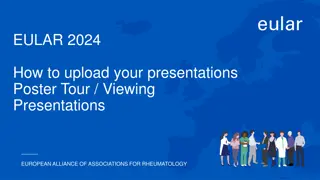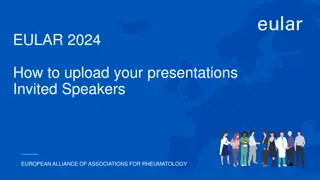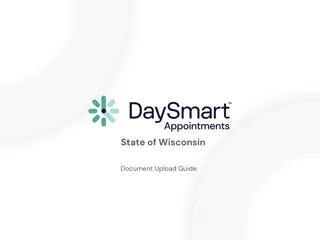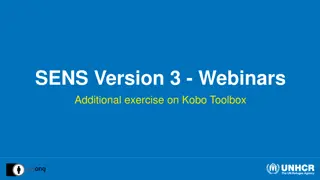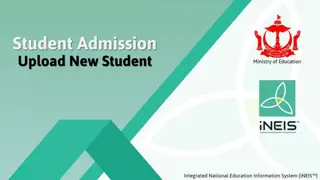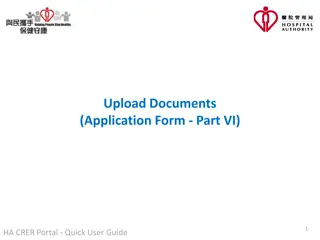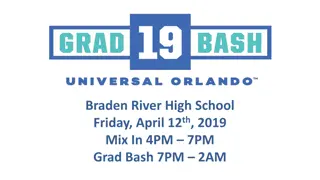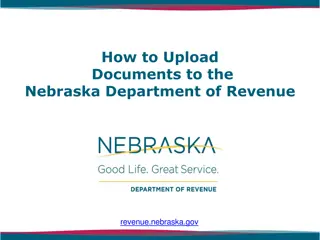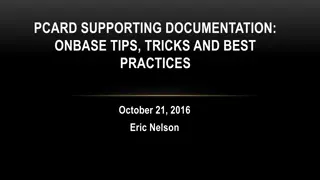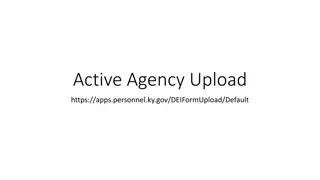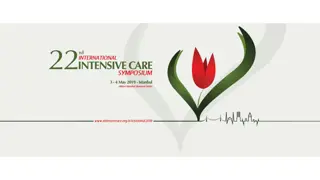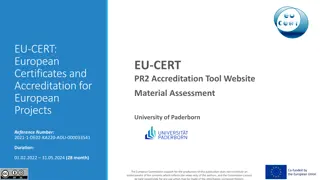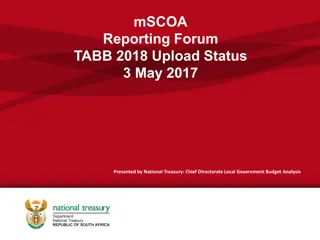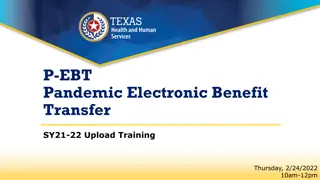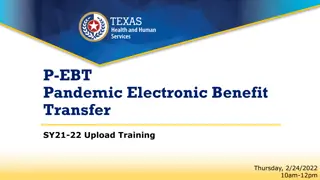
Graduate Students Writing Intervention: Solutions and Strategies
Address the challenges of graduate students struggling with writing skills in the field of communication sciences and disorders. Explore accreditation standards, identify problems, and offer a detailed solution through a special-topics writing course for enhancing written language proficiency.
Download Presentation

Please find below an Image/Link to download the presentation.
The content on the website is provided AS IS for your information and personal use only. It may not be sold, licensed, or shared on other websites without obtaining consent from the author. If you encounter any issues during the download, it is possible that the publisher has removed the file from their server.
You are allowed to download the files provided on this website for personal or commercial use, subject to the condition that they are used lawfully. All files are the property of their respective owners.
The content on the website is provided AS IS for your information and personal use only. It may not be sold, licensed, or shared on other websites without obtaining consent from the author.
E N D
Presentation Transcript
Help! Our Grad Students Can t Write Leisa Harmon, MS, CCC-SLP Department of Communication Sciences and Disorders 2022 NDUS Teaching and Learning Conference
Agenda Agenda
Thank you! Thank you! 8 vulnerable graduate students My colleagues Be seen. Be heard. BE INSPIRED.
Our Problems: 1. Significant # of students not meeting writing expectations 2. Needed to provide writing intervention Be seen. Be heard. BE INSPIRED.
SLP Program Accreditation Standards Program Accreditation Standards Written Language Proficiency Opportunities for Remediation Be seen. Be heard. BE INSPIRED.
ASHA Council on Academic Accreditation Standards for Accreditation of Graduate Education Programs in Audiology and Speech-Language Pathology 3.1.1B Professional Practice Competencies The program must provide content and opportunities for students to learn Use all forms of expressive communication including written, spoken, and non-verbal communication with individuals served, family members, caregivers, and any others involved in the interaction to ensure the highest quality of care that is delivered in a culturally competent manner. Be seen. Be heard. BE INSPIRED.
ASHA Council on Academic Accreditation Standards for Accreditation of Graduate Education Programs in Audiology and Speech-Language Pathology (Continued) 4.3 The program has policies and procedures for identifying the need to provide intervention for each student who does not meet program expectations for the acquisition of knowledge and skills in the academic and clinical components of the program. Be seen. Be heard. BE INSPIRED.
Our Solution: Prescribed special-topics writing course Be seen. Be heard. BE INSPIRED.
Class Format Class Format 2 SH Graded Textbook: Hegde, M.N. (2018). A coursebook on scientific and professional writing for speech-language pathology, 5 ed. San Diego CA: Plural. Be seen. Be heard. BE INSPIRED.
Course Objectives Course Objectives Use a functional writing process that incorporates critical thinking, prewriting, drafting, revising, and editing Demonstrate proficiency with basic writing mechanics for clinical documentation Demonstrate proficiency with basic mechanics for professional writing Be seen. Be heard. BE INSPIRED.
Pedagogy Pedagogy Mini-lessons Examples Group discussions Quizziz.com Peer editing FEEDBACK Be seen. Be heard. BE INSPIRED.
Requirements Requirements Weekly assignments from textbook Basic rules of usage (punctuation, grammar) Basic rules of composition (concise and direct writing, parallelism, avoiding shifts, etc) Discipline-specific writing assignments (clinical writing) Daily progress notes Lesson plans Assessment reports Home programming Be seen. Be heard. BE INSPIRED.
Day 1: Setting a Positive Tone Be seen. Be heard. BE INSPIRED.
Good Clinical Skills Poor Clinical Skills Good Writing Skills Poor Writing Skills
Surprises along the way Be seen. Be heard. BE INSPIRED.
We had to get through blaming. Be seen. Be heard. BE INSPIRED. This Photo by Unknown Author is licensed under CC BY-NC
They didnt understand process writing. Be seen. Be heard. BE INSPIRED.
Creative Creative Planning Drafting Sharing Evaluating Technical Technical Planning: Outlining Rough Draft ?? Read over the entire document: do I have the format (sections, heading, red/blue squiggly lines)? Make changes to content Make changes to spelling, grammar Submit to supervisor 1 2 3 7 STEP WRITING PROCESS ( E D U C A T I O N E N D O W M E N T F O U N D A T I O N ) 4 Revising Editing 5 6 Publishing 7
BACKWARD PLANNING: INITIAL PROGRESS REPORT Feb 4: Submit Plan Draft Evaluate Revise Edit
They didnt know how to outline. Be seen. Be heard. BE INSPIRED.
They didnt know how to peer edit. Be seen. Be heard. BE INSPIRED.
They liked the assignments. Be seen. Be heard. BE INSPIRED.
They had valuable input: They had valuable input: writing checklist Be seen. Be heard. BE INSPIRED.
They had valuable input: They had valuable input: ideas for clinical instructors Be seen. Be heard. BE INSPIRED.
They were proud of themselves. Be seen. Be heard. BE INSPIRED.
Results Results Be seen. Be heard. BE INSPIRED.
Students Final Grades 1 A 7 B Be seen. Be heard. BE INSPIRED.
Clinical Supervisors Ratings of Written Communication Student Fall 2021 Spring 2022 Change 1 2.0 3.0, 4.0 +.5 1 Not evident 2 - Inadequate 3 Present 4 Adequate 5 Consistent * - missing data 2 3.0 4.0, 4.0 +1 Acceptable Level = 3.5 3 2.0 3.5, 4.0 +1.75 4 2.0 3.5, 4.0 +1.75 5 2.0 4.25, * +2.25* 6 * 2.75, * * 7 3.25 4.0 +.75 8 2.0 3.25, 3.5 +1.35 Be seen. Be heard. BE INSPIRED.
Writing Attitude Survey (Podson, 1997; Rafanello, 2008) 20 questions Higher score = more positive and confident about writing Strongly Disagree Disagree Don t Know Agree Strongly Agree Example Questions I avoid writing whenever possible. 5 4 3 2 1 I have no fear of my writing being evaluated. 1 2 3 4 5 I look forward to writing down my ideas. 1 2 3 4 5 I am afraid of writing when it might be evaluated. 5 4 3 2 1
Writing Attitude Survey Class Average Score 98.25 61 1 2
Writing Behavior Inventory (Podson, 1997; Rafanello, 2008) 16 questions Higher scores = more efficient & effective writing behaviors Example Questions Never Rarely Don t Know Some- times Always Question Examples 1. I gather information I need before I begin writing. I set aside a specific time during the day to work on writing tasks. 0 1 2 3 4 2. I use prewriting techniques to generate ideas. I gather information I need before I begin writing. 0 1 2 3 4 I identify the specific purpose for each document. 3. I use prewriting techniques to generate ideas (for example, outlining, mapping, freewriting). 0 1 2 3 4 I identify the specific purpose for each document. 0 1 2 3 4
Writing Behavior Inventory Class Average Score 65.125 48.125 1 2
Final Writing Sample Prompt: A Reflection on the Past, Present, and Future of My Writing Students scores /20 pts Content (10 points) All 8 students = 10 Writing (10 points) Range = 7.0 9.9 Total Score Range = 17 - 19.9SD= 1.0677
Course Evaluations Course Evaluations Be seen. Be heard. BE INSPIRED.
Qualitative Qualitative Faculty comments (anecdotal) Students final writing project: Past, Present, and Future of My Writing Increased confidence in writing skills Need for further improvement Be seen. Be heard. BE INSPIRED.
Conclusions Conclusions Prescribed writing intervention class improved most students clinical writing skills. Key features Writing process instruction Outlining and timelining Peer editing Be seen. Be heard. BE INSPIRED.
Future Implications Future Implications Viable option for writing remediation for struggling students Small class size is critical for adequate feedback Consider allowing students to opt in Gather more data Interrater reliability Qualitative analysis Be seen. Be heard. BE INSPIRED.
Resources Burrus, A. & Willis, L. (2017). How to write, talk, and act like a clinician, 2nd edition. San Diego, CA: Plural. American Speech-Language Hearing Association (2022). Accreditation Handbook: 2020Standards for accreditation of graduate education programs in audiology and speech-language pathology. Retrieved from https://caa.asha.org/siteassets/files/accreditation-standards-for-graduate-programs.pdf. American Speech-Language Hearing Association (2020). 2020 Standards and implementation procedures for the certificate of clinical competence in speech-language pathology. Retrieved from 2020 Certification Standards in Speech-Language Pathology (asha.org). Education Endowment Foundation. Improving literacy in key stage 2: Guidance report, 2nd ed. Retrieved from https://d2tic4wvo1iusb.cloudfront.net/eef-guidance-reports/literacy-ks2/EEF-Improving- literacy-in-key-stage-2-report-Second-edition.pdf?v=1637857731, 19 May 2022. Flowerdew, J. and Costley, T. (2017). Discipline-specific writing: Theory into practice. Oxfordshire, UK: Routledge. Goldfarb, R. & Serpanos, Y. (2014). Professional writing in speech-language pathology and audiology, 2nd edition. San Diego, CA, Plural. Halvorson-Bourgeois, B., Riotte, M., & Smith, S. (2020) Guiding students clinical writing and critical thinking: Utilizing scholarly teaching to develop and implement a clinical writing rubric. Teaching and Learning in Communication Sciences & Disorders, 4(2). Hegde, M.N. (2017). A coursebook on scientific and professional writing for speech-language pathology: Fifth edition. San Diego, CA: Plural. Podsen, I.J. (1997). Written expression: The principal s survival guide. Larchmont, NY: Eye on Education. Rafanello, D. (2008). Writing well: It s all about attitude. Professional Writing Exchange, May/June 2008. Retrieved from ww2.csudh.edu/ccauthen/575S12/attitude- surv.pdf#:~:text=writing%20well%3A%20it s%20all%20about%20attitude%20Professional%20writing%2C,amount%20of%20time%20they%20dedicate%20to%20writing-related%20tasks. Rawson, R.E., Quinlan, K.M., Cooper, B.J., Fewtrell, C. & Matlow, J.R. (2005). Writing-skills development in the health professions. Teaching and Learning in Medicine, 17(3), 233-239. Schneider-Cline, W. (2017). Developing graduate students self-regulation and critical thinking during a clinical writing workshop. Teaching and Learning in Communication Sciences & Disorders, 1(1). Stein-Rubin, C. & Fabus, R. (2012). A guide to clinical assessment and professional report writing in speech-language pathology. Clifton Park, NY: Delmar. Willis, L. & Piazza, L. (2019). Developing and using a rubric to provide feedback and improve CSD clinical writing. Teaching and Learning in Communication Sciences & Disorders, 3(2). Wisconsin Department of Public Instruction. What is disciplinary literacy? Retrieved from https://dpi.wi.gov/sites/default/files/imce/cal/pdf/section2.pdf.

